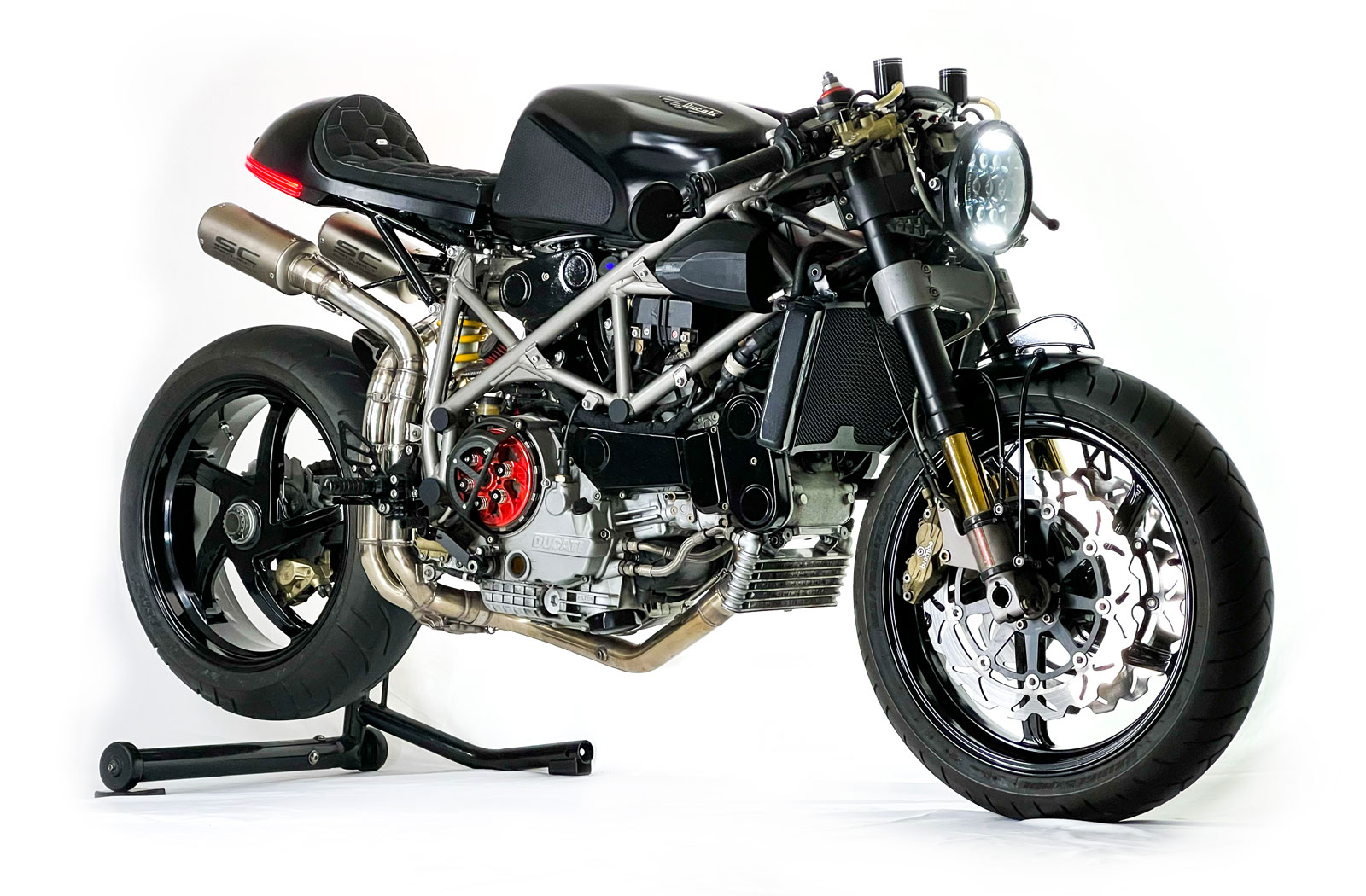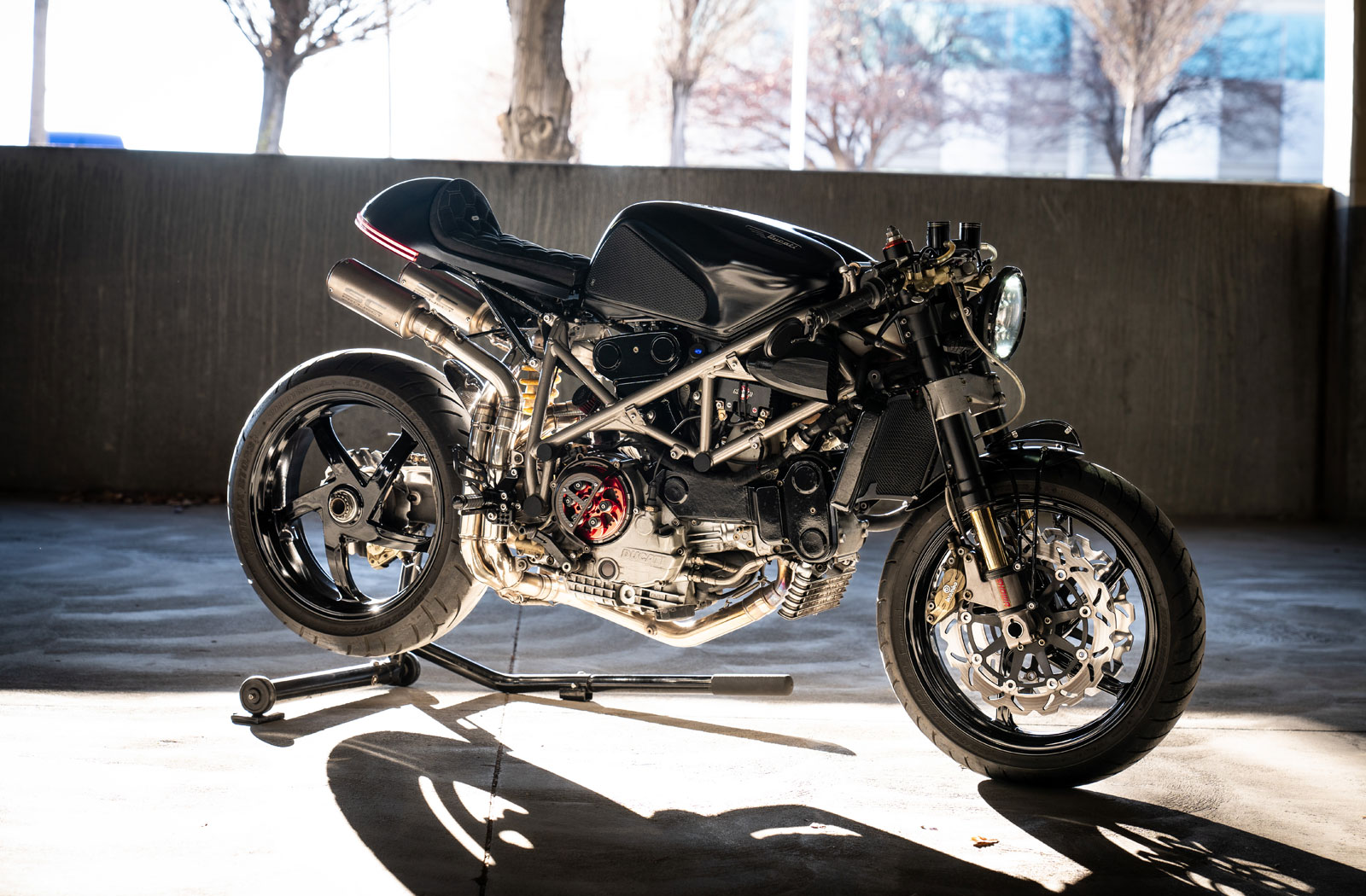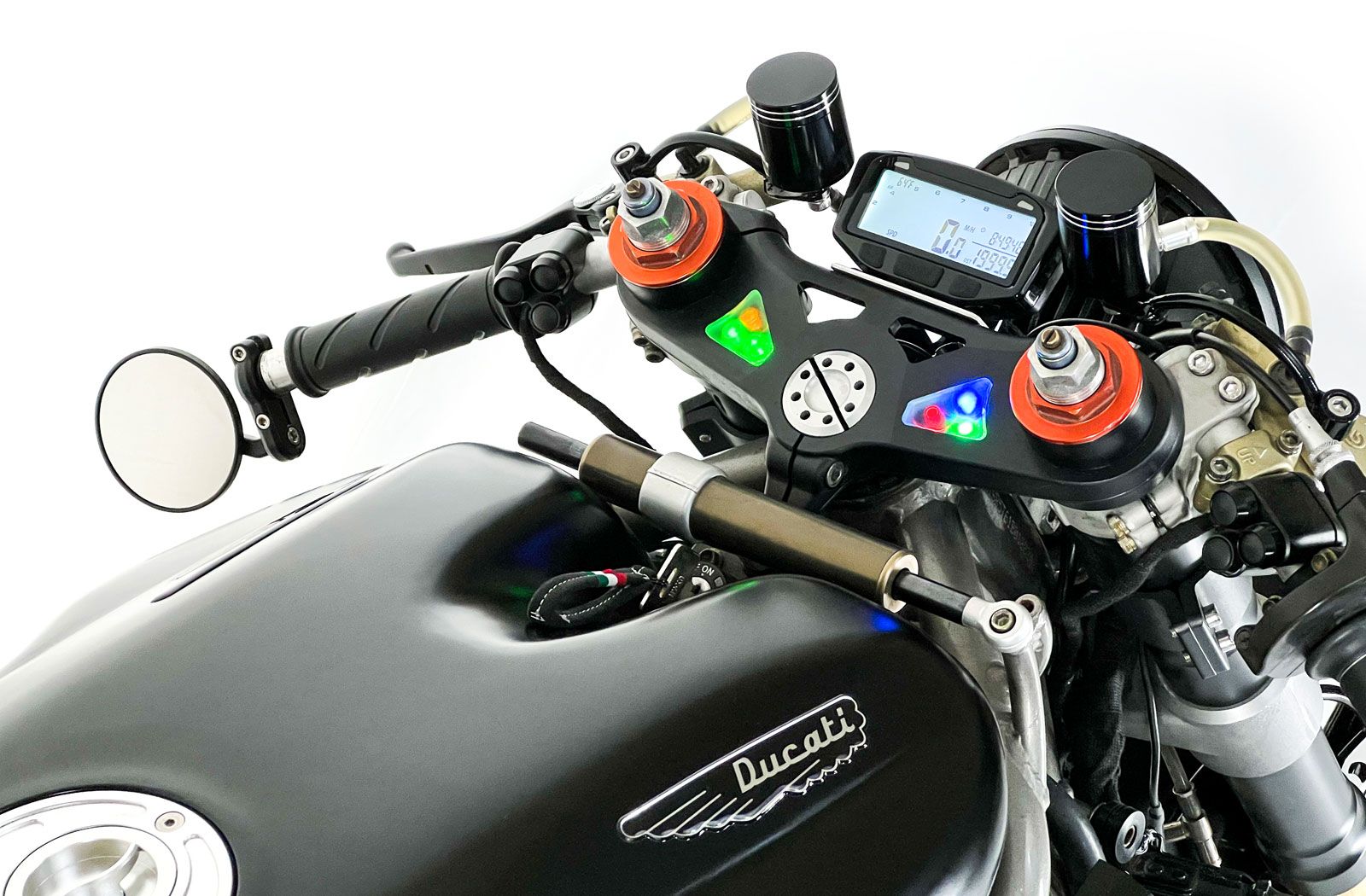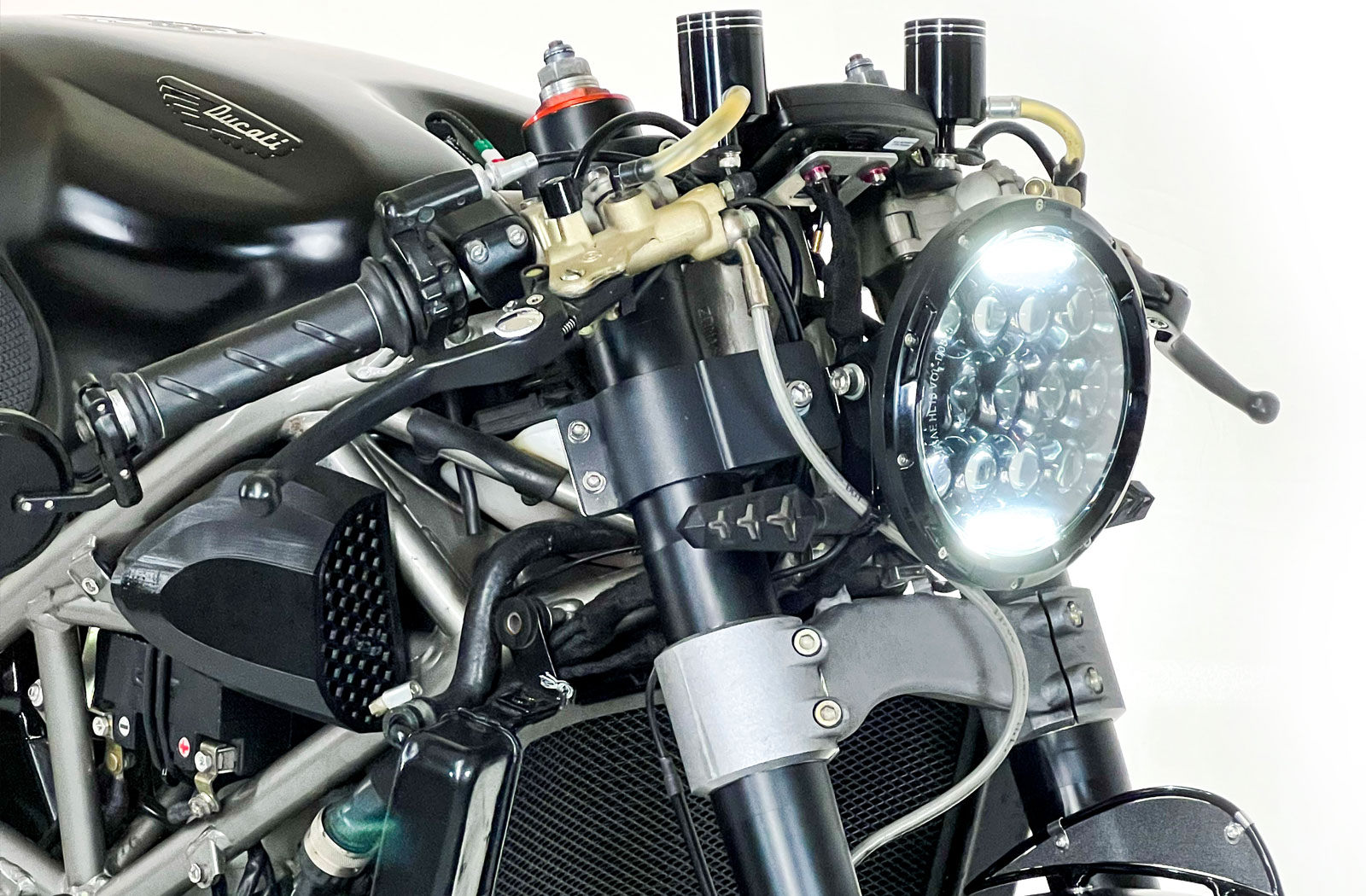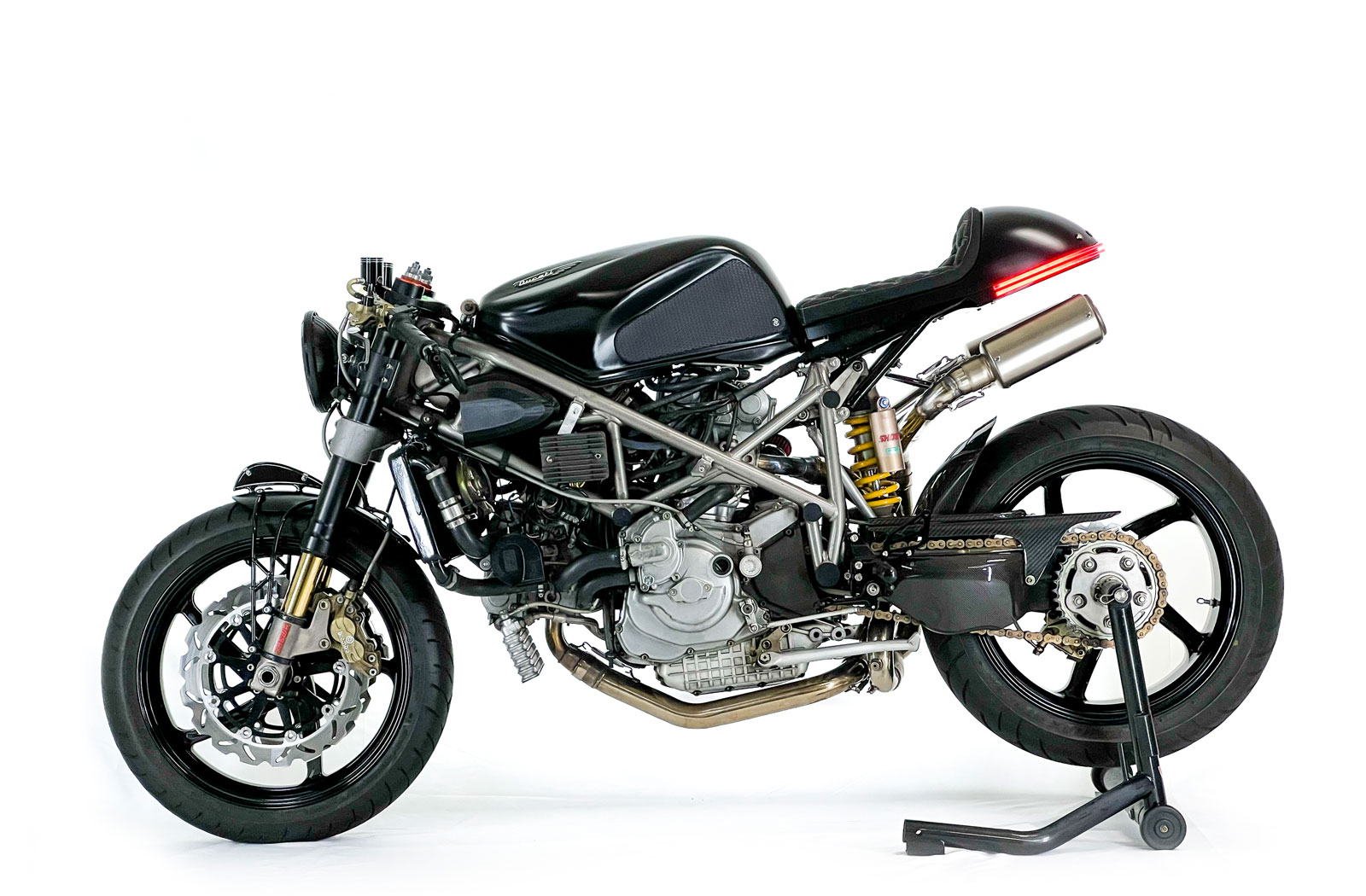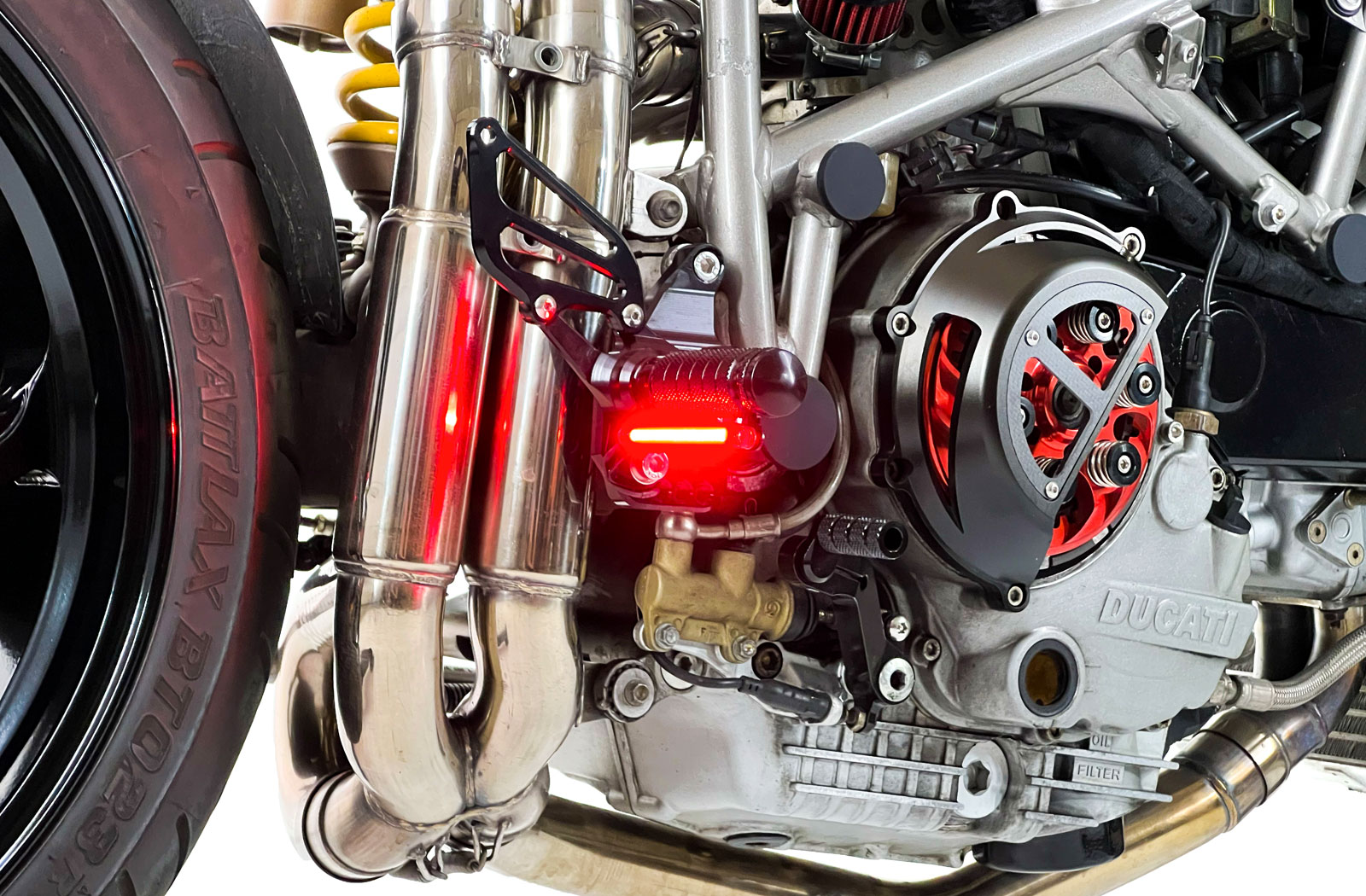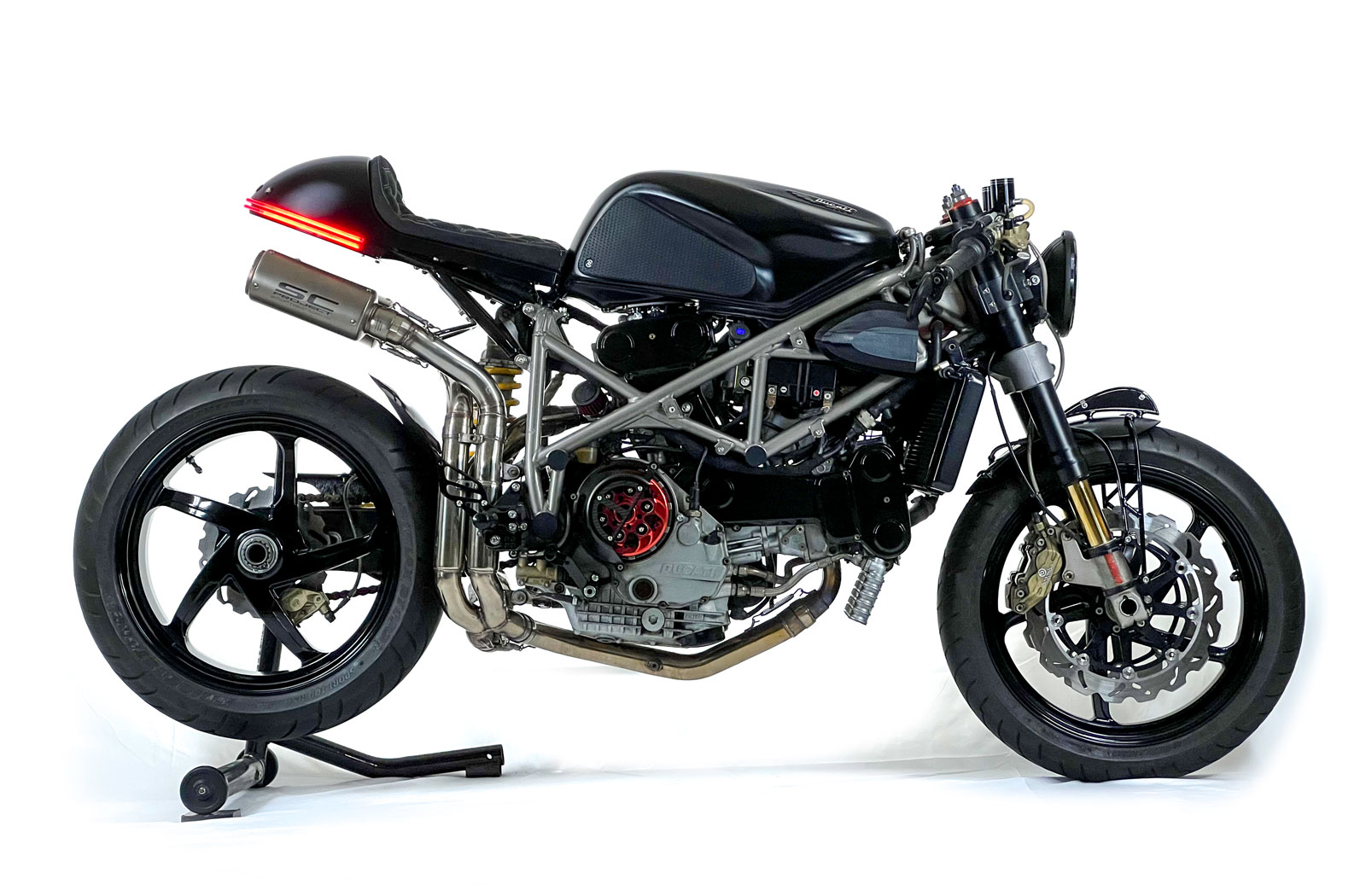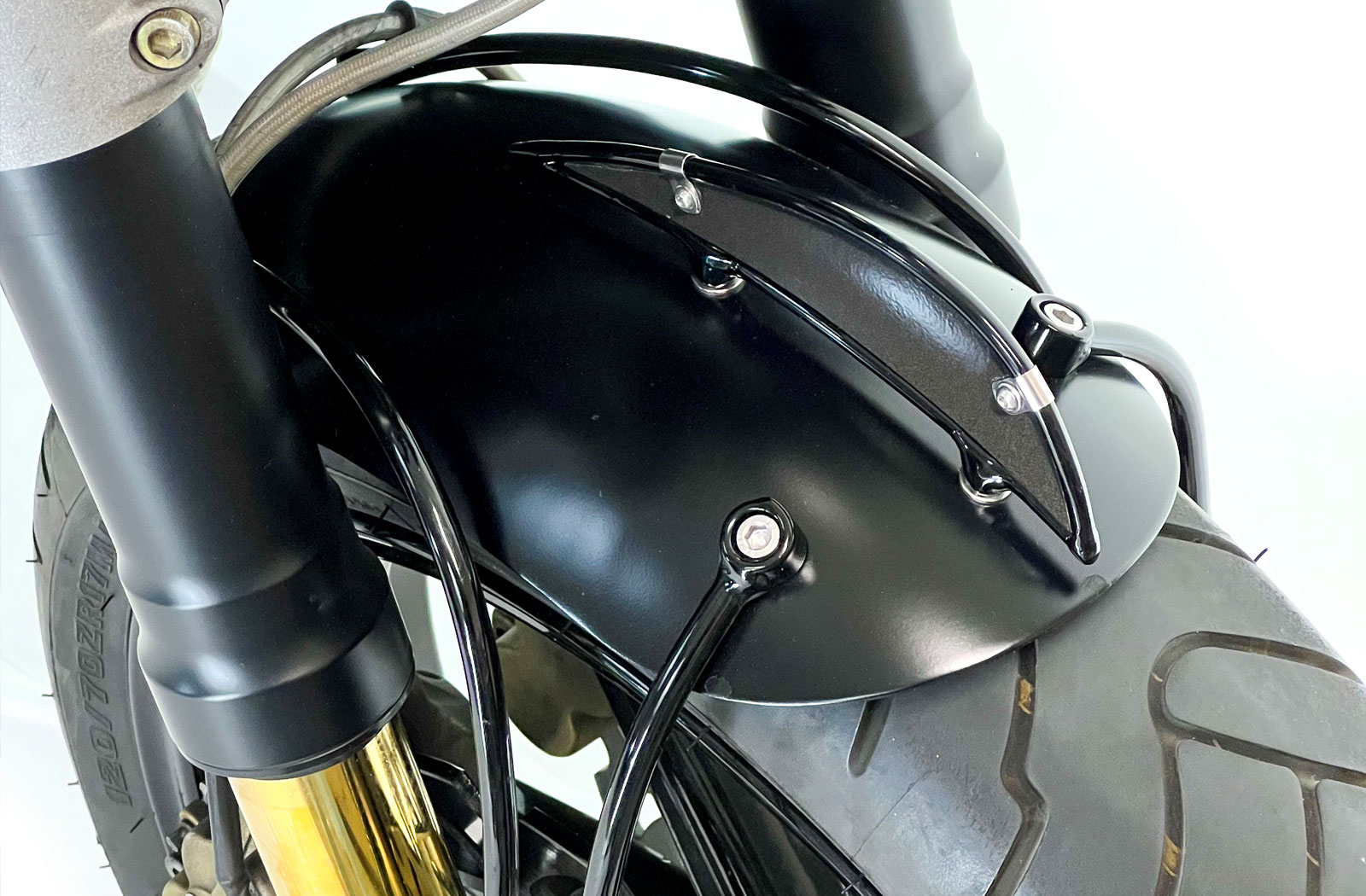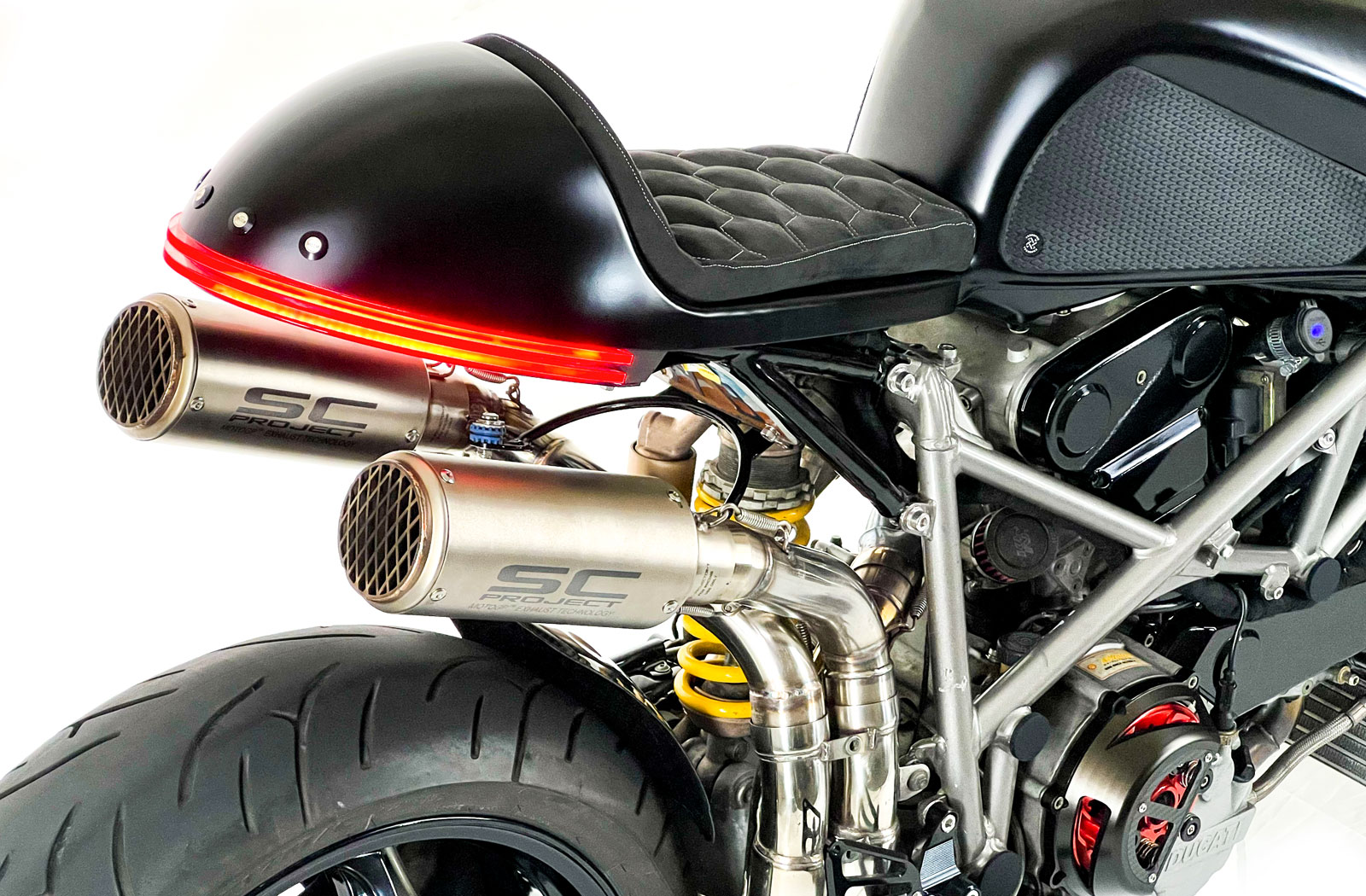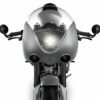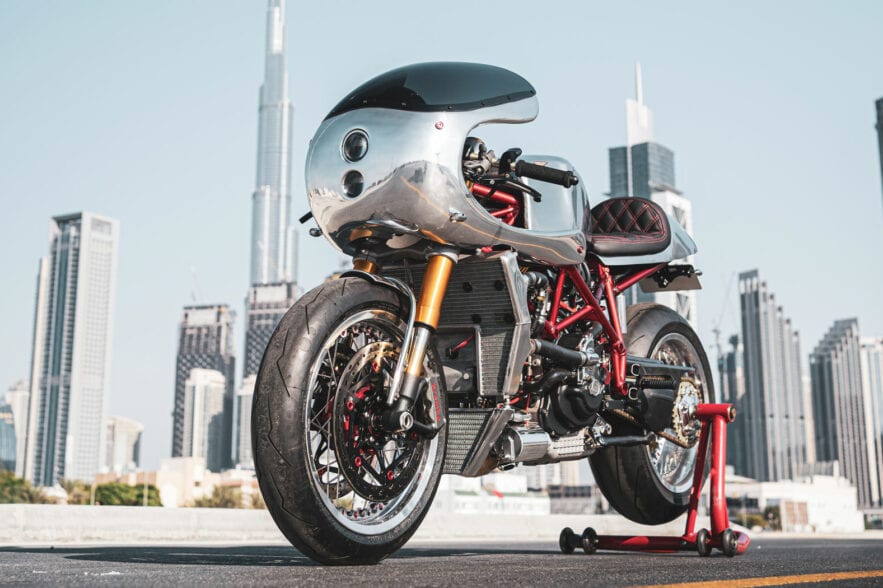Yamaha’s release of the 2007 R6 gave birth to an obsession that led Jaron Hall deep down the rabbit hole of motorcycle customization. “At age 17, I wrote my parents a letter to pitch my case about why they should let me buy a motorcycle. Surprisingly, it did the trick and they let me purchase a 2008 Ninja 250 before I was 18.” he recalls.
Inspired by his time working on classic cars with his grandfather, Jaron wasted no time modifying the Ninja. Starting with bolt-on modifications he made the bike his own, but an accident 6 months later put it out of action and his motorcycling aspirations on hold.
Thankfully it wasn’t too long before he was back in the saddle and he returned to riding with a newfound love of the cafe racer scene. Naturally, a slew of custom builds followed. “I bought a 1972 Honda CL350, then a 1977 Yamaha XS750, a 1999 Ducati 750SS, and this, my 2001 Ducati 996,” he says. Completed in his home garage in Salt Lake City, Utah, the Ducati 996 cafe racer is Jaron’s crowning achievement.
Inspiration for the project came from the many motorcycles he’d seen customized by professional workshops like Debolex, Benjie’s Cafe Racer, and Auto Fabrica, to name a few. And his idea was to merge classic Ducati styling with Anime-inspired tech.
Jaron chose the 996 thanks to his love of the bike’s trellis frames and single-sided swingarm. Of course, cutting into a stock 996 isn’t something your average Ducatista would approve of, but this bike’s previous owner had already modified the bike which in Jaron’s eyes made it fair game.
“I bought (rescued) it from a private seller who was trying to turn it into a Scrambler,” he says. “It had already been stripped of its fairings, had the subframe chopped, and was running on a set knobby tires. He was selling it for a good price. I originally was going to modify my 1999 Ducati 750SS, but once I found this I sold the 750 and opted for this 996 to be my donor bike.”
Before jumping into the build Jaron used Photoshop to mock up his ideas. Using photos of the bike he was able to try out different color schemes, bodywork options and come up with a few unique custom part ideas he wanted to fabricate himself. Once he was happy with how things were looking he tore 996 down and began the rebuild.
First, Jaron built a new subframe that would suit the cafe racer-style wasp tail seat unit he had in mind. Another touch of classic styling came in the form of a custom front fender complete with Jaron’s interpretation of a 50s Brit bike-pedestrian slicer. It’s held in place using brackets styled to mimic the trellis chassis. Once completed both the fender and subframe went off to the powder coaters along with the wheels to receive some fresh paint.
Jaron’s anime-inspired additions can be seen mainly in his choice of lighting. Wrapping around the base of the tail unit is a bespoke plexiglass LED tail light inspired by those found on the Aston Martin Vulcan. He’s complemented it with sequential turn signals, an LED headlight, and LED and Plexiglass warning lights integrated into the billet top yoke. A carbon fiber rear fender and chain guard and matching machined fluid reservoirs further add to this 996’s modern design touches.
Wanting to push his skills further Jaron even tried his hand at sewing, and did a very decent job of it. “The Alcantara seat is hand-sewn with a hex pattern. I used my mom’s sewing machine to make this. My wife, my family, and my friends all doubted I could sew such a complex pattern since my only sewing experience was a class in 8th grade!”
Since the 996 was already the fastest motorcycle he’d ever owned, Jaron kept the performance tweaks to the basics, but his approach was anything but ordinary.
“For the F1-styled air scoops, I learned how to 3D model with Shapr3D, and my brother helped me 3D print them with hexagon intake screens that match my seat. I’m quite proud of them and was honored to work on that together with my brother,” he points out. The bike’s exhaust is a one-off too, inspired by the Superleggera 1299 design. “I had never welded before or used an angle grinder. I almost cut my thumb off! I built this whole bike with the cheapest Harbor Freight flux core welder available. The only exception was the exhaust, which my friend Mitch Witkamp helped me tig weld.” The finished exhaust system features stainless steel headers and twin SC-Project mufflers that sit directly beneath the tail.
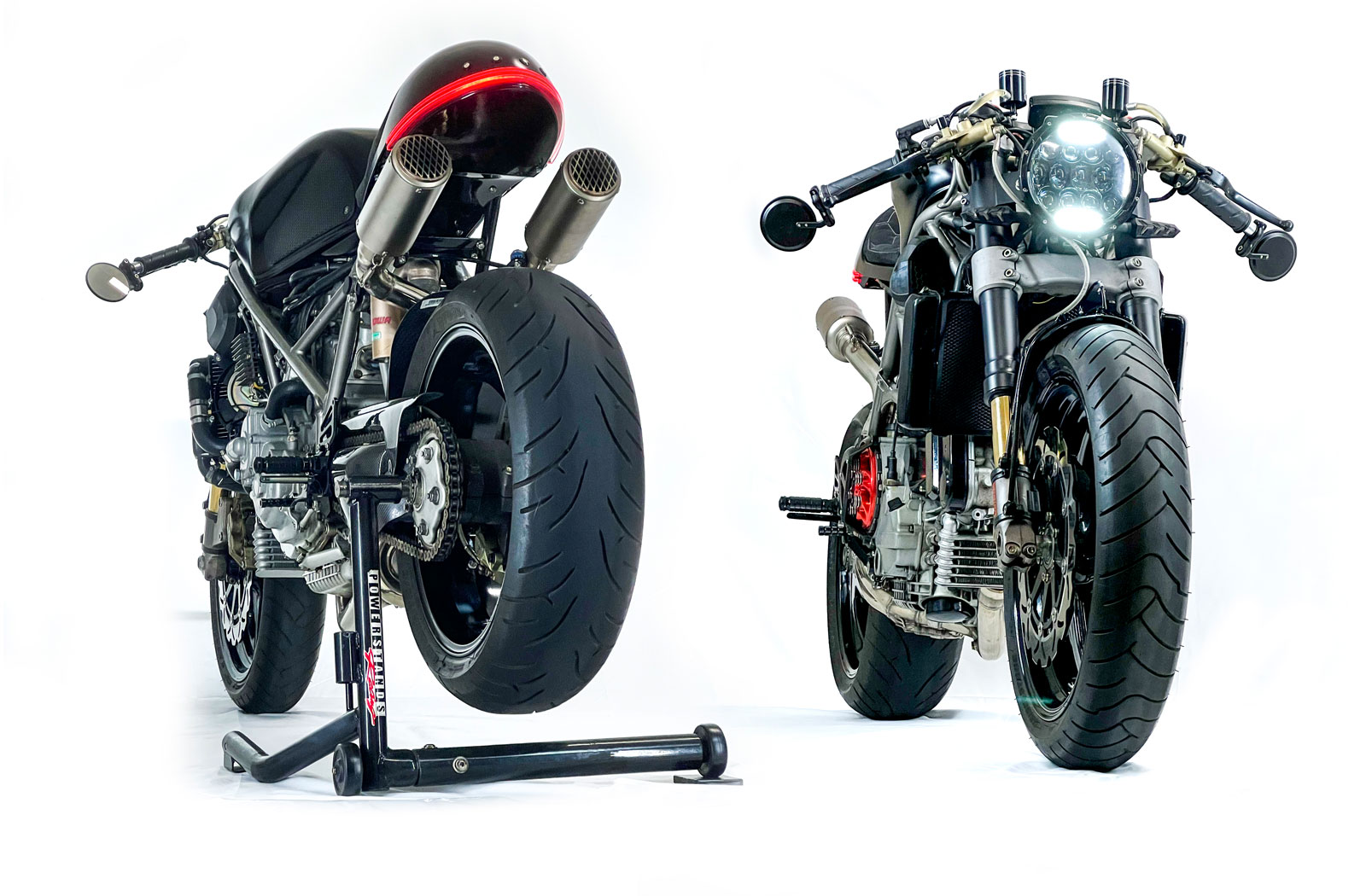

Of all the work done though it was the Ducati’s electrics that proved the most challenging. “For about 2 years the bike was giving me throttle issues off and on,” Jaron explains. “This bike is wired like a car. It has a temperature, oil, crank, throttle, and air pressure sensor along with a big ECU. It’s the most challenging thing I had to learn with this bike and sometimes I wanted to give up. I eventually sorted it out and found there were some improperly placed ground wires, a dying regulator rectifier, and a fried ECU.”
There’s no shortage of aftermarket tweaks that make this 996 cafe racer a visual feast and they’re all set against a sleek black paint scheme. A few highlights from the laundry list of parts include a blacked-out radiator, CNC rear sets, wavy brake rotors, bar end mirrors, and 1960s-style Ducati tank emblems. The result is a bike that looks equal parts sophisticated and sinister and is undoubtedly a hoot to ride.
